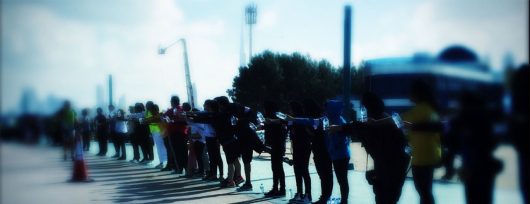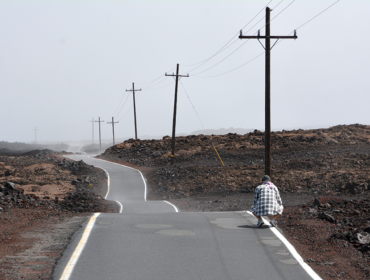How do we assess our bodily condition?
How do we find out whether we are on the edge but safe and not in danger to tip over?
How do we know whether we are under-challenged and when do we have to put more effort into our training?
When do we have to be careful and reduce the intensity and volume of our training sessions?

Especially, if you want to peak on time these are tremendously important questions to ask yourself, questions that are not easy to answer. It is after all a whole body feeling that needs to be judged by nobody else than ourselves. This is exactly the point where the Song of Songs of Experience is sung.
But how to get there, how to gain this experience?
To deliver peak performance and remain in balance at the same time may sound almost contradictory. The range each of us has within which she or he can move varies from individual to individual and therefore needs experimenting until a solid experience we can rely on is built up.

Balance is more than just putting equal weights on the scales. It is not a computation as simple as that the out-put signals just need to be compensated by the same in-put signals on the other side of the equation. In my opinion perfect well-being reflects perfect balance, balance seen as the result of smoothly interacting regulatory processes be they physiological, biochemical or biomechanical.
I think it may be easier to understand the complexity of these processes of balance, if you imagine a comparatively easy task like putting on socks by standing on one leg only and not grabbing any rail for support. A pattern of sensoric in-put signals is converted into muscle movements from which a stable posture may emerge. The out-put of motor-signals reassures the sensoric pattern of signals. This circular process is ongoing as long as the task is on. Keeping the balance needs permanent slight adjustments, and is thus a dynamic process.
Balance is easy to understand and we can clearly feel it by trying this one-leg experiment. Balance is by far more difficult to comprehend, if it comes to bodily processes such as blood pressure, blood sugar levels, appetite, sleep or mood. All of them reflect a state of balance and correlate with well-being, if they remain within the normal range.
Now, let’s get a little bit more concrete, as concrete as processes hidden under our skin allow it. The more glimpses we are able to catch from underneath the more relevant our analysis and interpretation will become and finally turn into solid trustworthy experience.
As a competitive athlete embedded in an everyday life of job and family you have to watch out, when you are about to lose your balance.
There are a few parameters you can measure and then interpret accordingly, for example an elevated heart rate at rest or a heart rate that is behaving quite rigidly and is not adapting according to the workload. Body temperature can be another sensor easy to record.
I am personally more a fan of monitoring the more complex body states such as sleep, appetite, mood, and pain. These conditions emerge from the complex interactions of all body systems, be they of metabolic origin or contributed by the immune system, the nervous system or the hormones. Appetite, sleep, mood or prolonged fatigue are all whole body sensations and indicate to you early on when things start to run astray and balance is jeopardized.
A log makes the course of time apparent and recurrent patterns visible
As long as we don’t have the routine of self-observation and analysis it definitely makes sense to keep a log. One should always consider that time plays an essential role in biology and physiology in specific. A log book allows us to go back in time and see whether we can recognize recurrent patterns. It can so easily happen that you overlook fluctuations, troughs or other decent indicators being close to tipping over the edge.
A log book that relates your workload and training volume to mood swings, sleep disturbances, loss of appetite or prolonged fatigue helps us to counterbalance and fine-tune your training efforts in time.
I would also keep a pain log. Monitoring pain can help you to find its source. If a pain symptom disappears in one specific area, we may assume that we got rid of the problem. But instead it just moved to somewhere else. A pain log can disclose the root of the pain and make obvious that all our issues are connected, that the pain is not cured but only shifted to another area.
A good indicator for a threatening imbalance is the hampered coordination of our movements. This often is the case, if you suffer from pain in some bodily area. You may tend to stumble, especially when you are on a trail run where the ground is uneven.
Pain makes you shift the workload on other joints and muscles trying to find a pain relief. This compensatory behavior may work for a while until the pain catches hold of the respective area. Like this pains may wander through our muscles, joints, ligaments and connective tissues. A vicious circle evolves. Pain monitoring and the recording of small incidents can help to make the vicious circle apparent and thus the origin of the problem more obvious.

There are many devices on the market that promise us to take the load off our shoulders to make our own experiences. Certainly, they can help. But we have to be aware that all kinds of electronic devices are working with algorithms based on statistics. The device interprets the data collected from us according to its built-in rules, it cannot tell you whether this interpretation goes along with you personal well-being. It may well be but it may as well not!
Balance your everyday diet with BIESTMILCH
Our body is finding itself – if well balanced – in a well-controlled inflammatory state. This condition is permanently challenged by all kind of stress factors from the body’s inside and from the outside. If we are all balanced out then the control mechanism do work properly. Only experience can tell us how much workload we tolerate before tilting over the edge and lose the precious balance. The experiment is an essential part of the game that finally endows you with this experience.
BIESTMILCH is an all natural food that fosters the control processes that avoid the deterioration of the ubiquitous inflammatory processes. It is not able to compensate for anything and everything and avoid that we may never again tilt over the edge, but BIESTMILCH definitely gives us more stability, especially if we take it regularly over a longer period of time. Consider it as food and take it every day. Integrate it in our everyday diet.






